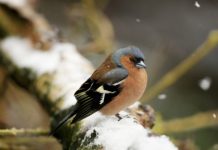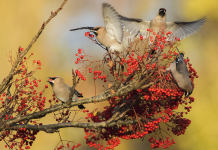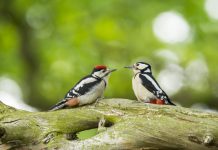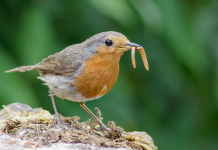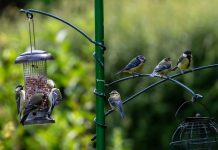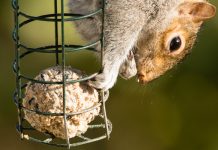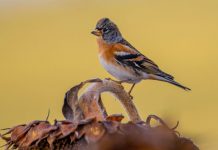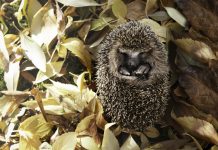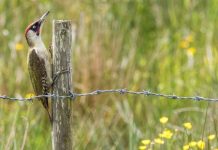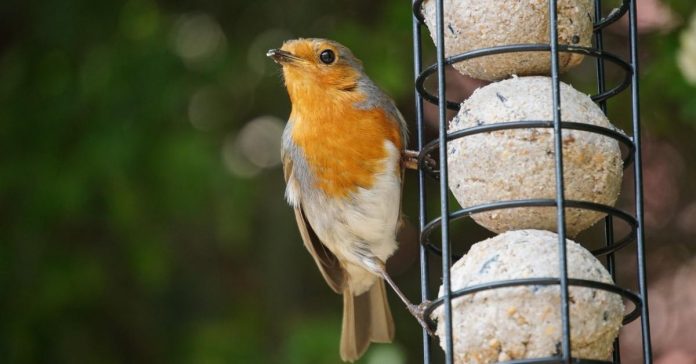There’s nothing better than relaxing in your favourite armchair with a cup of tea, watching through the window as birds flock to your garden to help themselves to your tempting buffet of nuts, seeds and suet… and maybe even catching a snap for our #SnappyBeaks competition while you’re at it! But with so many different types of seed and feeders available, how do you differentiate between them and choose the best bird feeder for your garden?
To give you a helping hand, we’ve put together a guide to the most popular types of bird feeder to help you decide which might be best for attracting the birds you’d like to see in your garden.
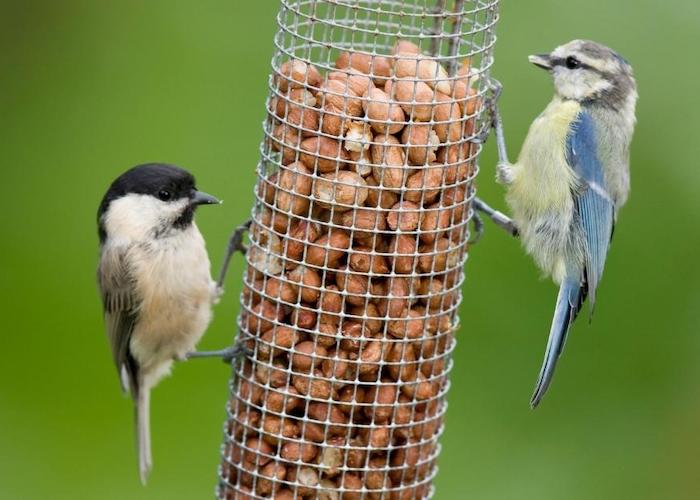
Image: Canva
Bird tables and feeding stations
Before you choose your bird feeders, you need somewhere to hang them! To get the most out of observing the birds that visit your garden, we recommend creating a feeding hub in the form of a bird table or a multi bird feeder station.
Bird tables can be accessed by a wide variety of birds, allow you to put out crumbs from the kitchen as well as seed, and can be easily embellished with hooks to hang feeders from the feeding platform.
On the other hand, for a smaller space or a more discreet silhouette, such as for positioning in a border or lawn, a feeding station is ideal. These incorporate several hooks mounted on a metal pole from which feeders of your choice can be hung, and often include an additional seed tray and water tray to cover all bases. You can buy a feeding station that comes complete with feeders, or just buy the framework and choose your own feeders for ultimate flexibility. Read on for our top tips on choosing the best feeders for you!
Ground feeding trays
Some birds prefer to feed on the ground and won’t fly up onto a feeder. Ground feeding birds include blackbirds, thrushes, chaffinches, wrens and hedge sparrows. Robins are also primarily ground feeders, though they are sometimes seen on feeders. To accommodate these species, consider including ground feeders in your offering. It’s important not to put food straight on the ground as it may rot and attract unwanted visitors such as mice and rats. Besides, you wouldn’t serve your own dinner straight onto the table, would you?
To retain good hygiene and avoid wastage, try not to get too carried away and put out more food than the birds will eat in a day. The best foods to put in a ground feeding tray are seeds and mealworms, the latter is a great favourite for robins.
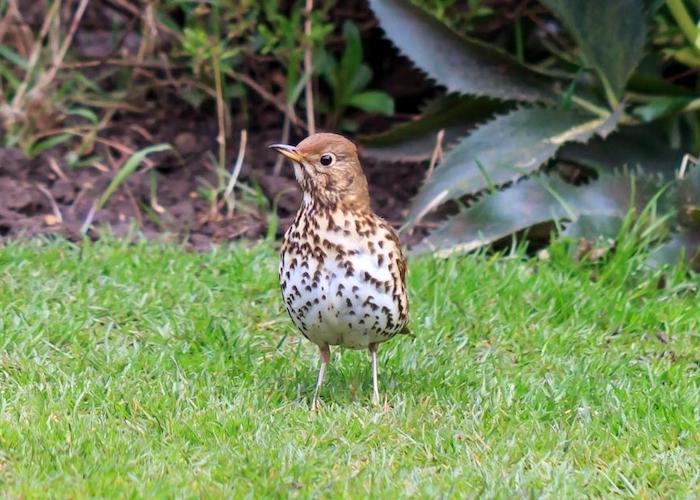
Image: Canva
Peanut feeders
Peanuts are a great high-energy food source that is adored by blue tits, great tits, house sparrows, and even nuthatches and greater spotted woodpeckers! They are one of the most popular bird feeds and attract a wide range of visitors. To avoid the risk of birds choking on whole nuts, it’s really important to put peanuts in a mesh feeder. As a bonus, if birds can’t fly off with whole nuts they will have to stick around to eat, so you get to watch them for longer! Peanut feeders are best removed during nesting season and replaced with seeds and suet, as large pieces of peanut carry a risk of choking baby birds.

Image: Canva
Seed feeders
There are many seed mixes available, many of which are aimed at attracting certain groups of birds. Our All Seasons Mix is a versatile option suitable for a wide range of birds all year round, while our Premium Spring & Summer Mix is specially formulated for exhausted and hungry parents during the breeding season.
Sunflower hearts, the husked kernels of sunflower seeds, are loved by tits, finches, sparrows, goldfinches and the increasingly rare greenfinch. These huskless hearts are easier for birds to eat than traditional sunflower seeds and leave no mess!
Our wide range of seed feeders are suitable for almost all seed mixes, with the exception of niger seed. Niger seed is very fine and requires a special niger seed feeder. If you want to attract the snazzy-plumaged goldfinch to your feeders, this is your best bet!
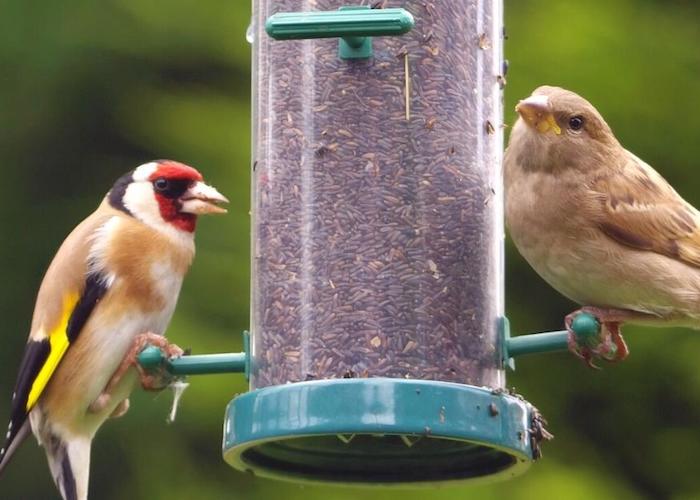
Image: Canva
Fat ball and suet feeders
Fat balls and suet are an energy-packed feed option that is perfect for getting birds through the winter and breeding season. Attractive to a wide range of species, suet comes in three formats: fat balls, blocks and pellets.
There are different feeders available for each type of suet. This Kingfisher Green Powder Coated Suet Fat Ball Bird Feeder is a great option for fat balls and the Supa 12 inch Suet Pellet Feeder Plastic is your best bet for pellets.
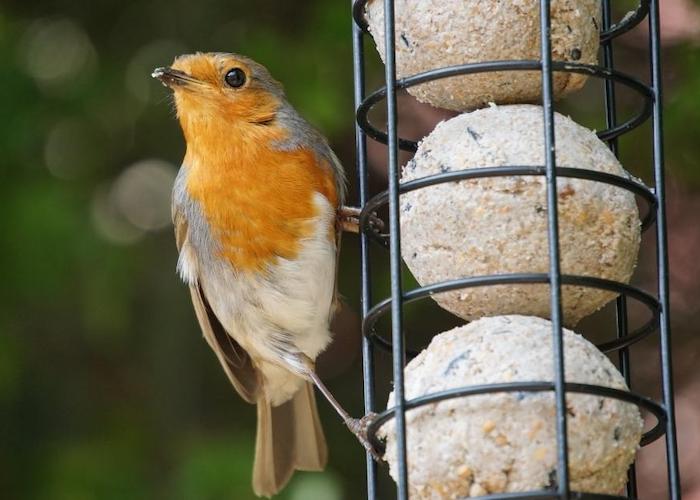
Image: Canva
Squirrel-proof feeders
If you’re struggling with uninvited diners at your bird feeding station, look no further than our range of effective squirrel-proof feeders. There are three main types: hanging feeders that are surrounded by a cage to allows birds through but keeps squirrels out, a domed cage that surrounds a ground feeding tray, or a specially designed squirrel-proof feeder that uses the weight of the squirrels against them. These latter feeders are more expensive, but they are more discreet and the most reliable option in terms of preventing squirrels from helping themselves to your bird feed. Our ‘squirrel buster’ feeders are also built to last, coming with a lifetime guarantee!
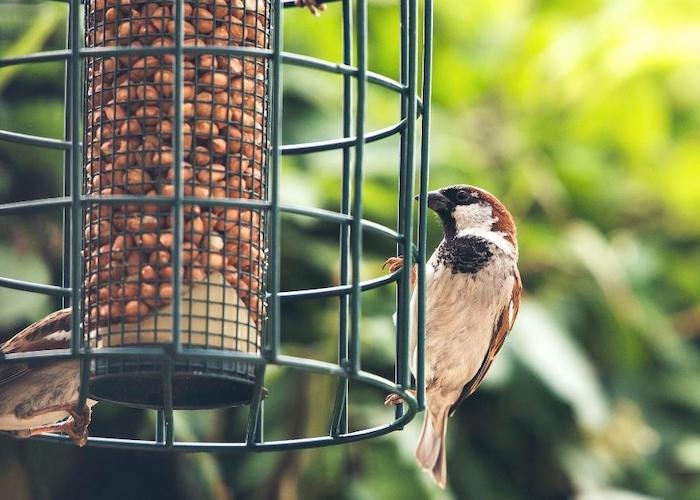
Image: Canva
Window feeders
Window feeders are an amazing way to observe your feathered friends at close range. You’ll spot detail you’ve never noticed before! Our window feeder is designed to hold either seed or fat balls, and attach and detach easily to your window or conservatory with suction cups. A window feeder makes a wonderful gift for any bird lover!
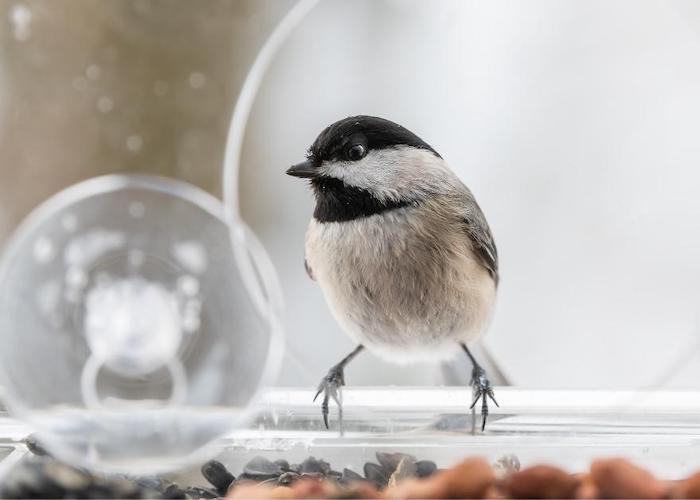
Image: Canva
And finally…
Don’t forget to add a bird bath nearby! Bird baths are essential for keeping your feathered friends hydrated, especially during the breeding season and in summer when clean water is often hard to find. An elegant bird bath can also be an attractive decorative addition to any garden. It makes a lovely gift too!
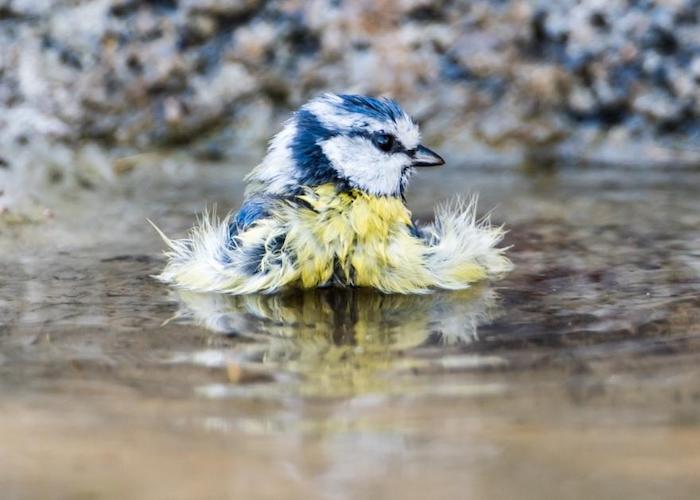
Image: Canva
We hope this quick tour has given you some ideas for which feeders to choose to attract your favourite birds to your garden. For more information see our guide to bird feeders. You can also browse our guide to bird feeding hygiene for tips on how to keep your feathered visitors happy and healthy once the buffet is up and running!

